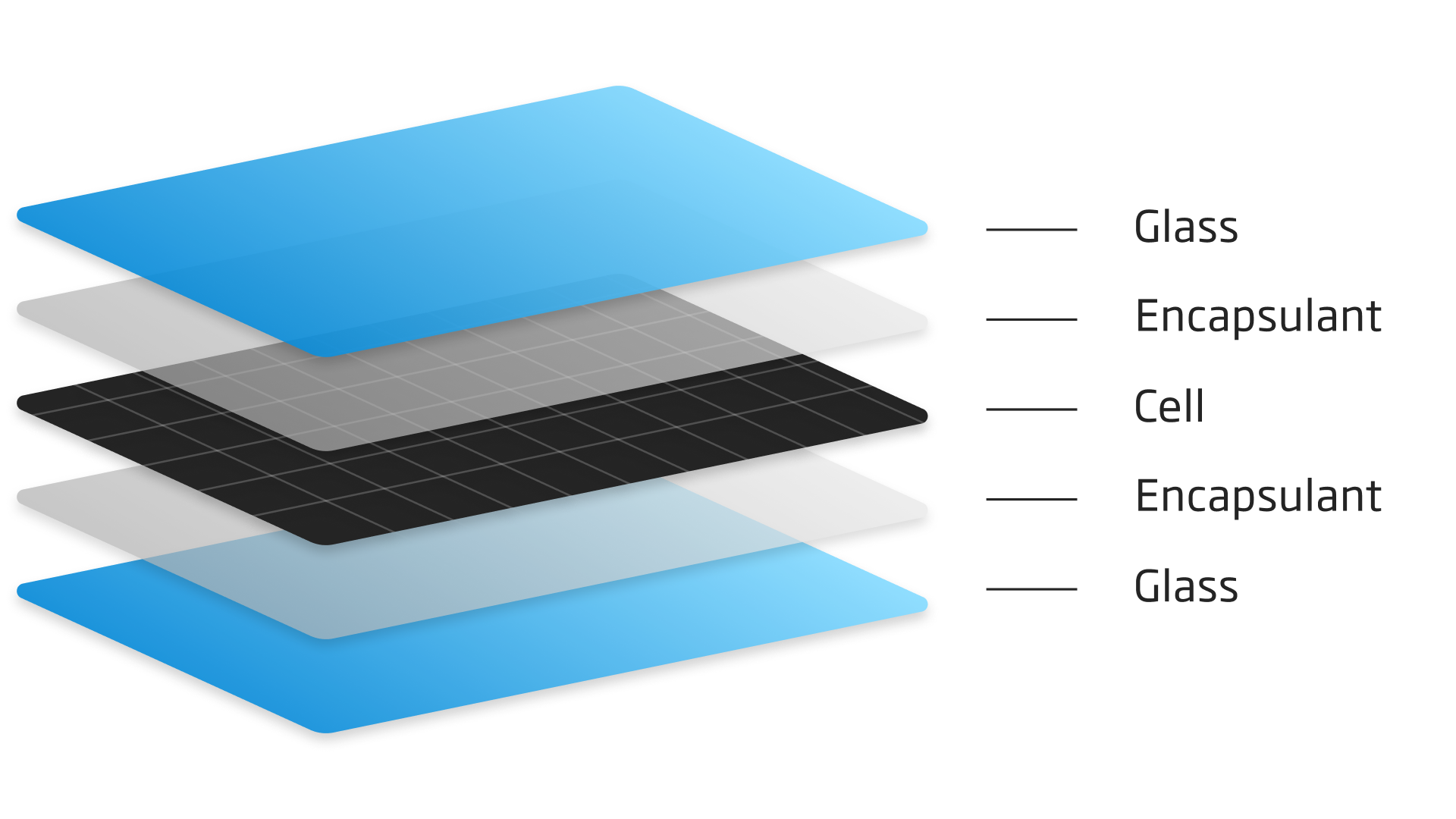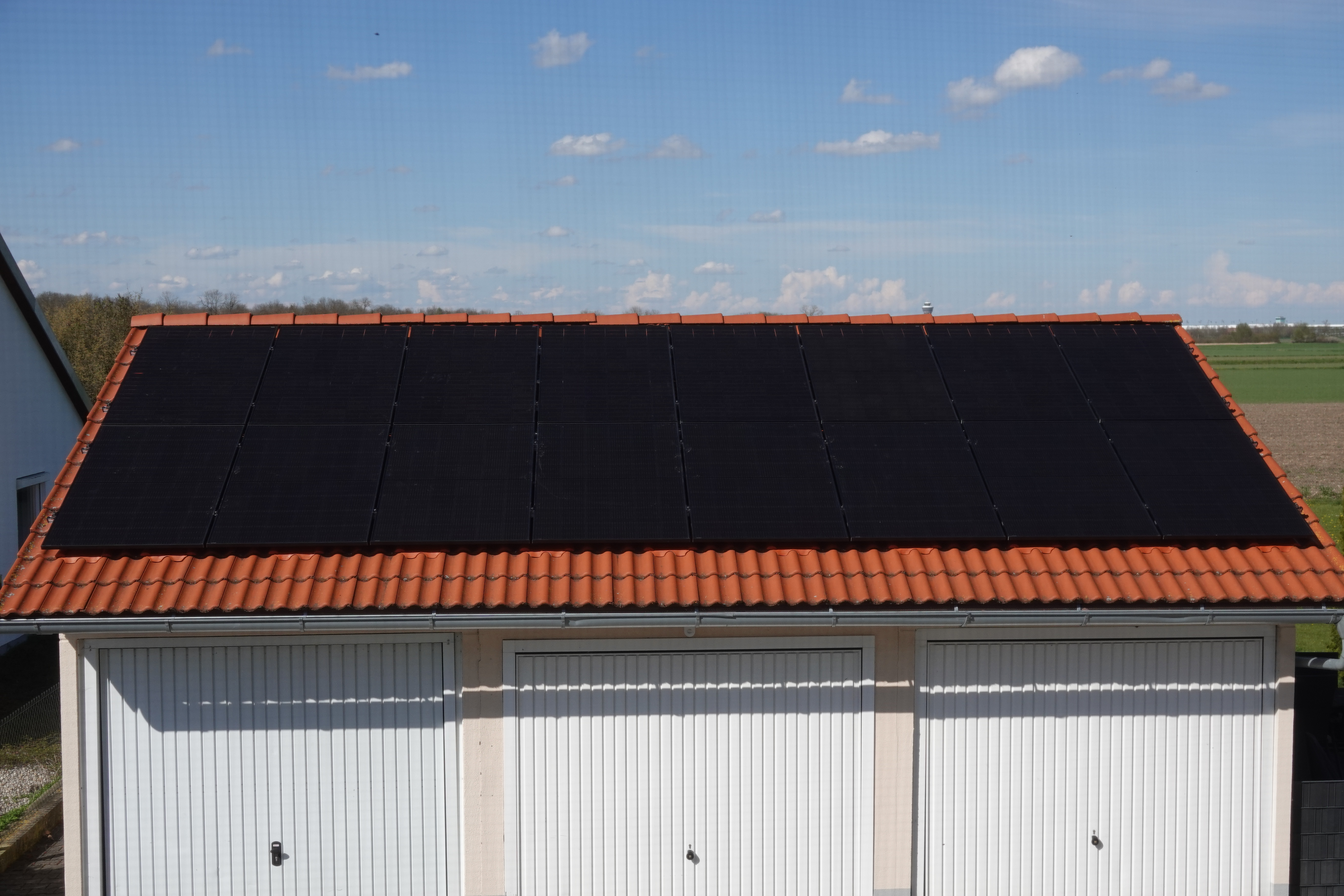Why Dual-Glass is the best solar panel technology for rooftops
- 23/07/27
- Reliability,Residential,Customer Value,Innovation and Advance,Panel Talk and Technology,Responsible Earth
With solar power evolving into a mainstream energy source, industry leaders and experts are starting to look beyond traditional solar panels. Dual-glass technology for rooftop installations can help investors, installers, and end-users recoup their investments faster than before.
Robustness and reliability are critical for solar professionals looking for resilience in solutions designed to provide a greener future. Thus, using dual-glass solar PV modules for rooftops offers the opportunity to increase the energy efficiency of commercial and residential buildings.
What are dual-glass solar modules?
Tempered glass effectively protects solar cells from environmental factors like wind, snow, dust, and moisture. The construction of traditional solar modules comprises a glass layer on the front side and a backsheet on the other.
The backsheet provides the solar module with additional insulation against the environment. Backsheet material must be capable of holding up against the weather, providing superior adhesion, and possessing enough mechanical strength to last for years. However, if the backsheet degrades prematurely, that could lead to extra maintenance and replacement costs.
In contrast, dual-glass solar panels replace the backsheet with a second layer of tempered glass on the rear side of the module. The combined strength of using two sheets of glass makes the solar panel less prone to becoming deformed or for microcracks to form in the cells. Installing dual-glass panels on a reflective surface, like a white rooftop, can increase solar energy production. That’s because nowadays, dual-glass solar modules use bifacial cells throughout, and this power is generated from both sides of the panel instead of just one.

The image shows the layers of the Vertex S+ dual glass modules
What are the benefits of dual-glass PV modules for rooftop installations?
Dual-glass structure has already become the standard for PV panels employed in ground-mounted, large-scale solar power plants. It’s proven to provide the kind of reliability and long-term performance industry professionals seek. Part of the past hesitation in using dual-glass technology also for rooftops came from concerns about weight and handling.
Previously, there was a trade-off in using dual-glass modules because the weight per sqm was higher compared to their glass/backsheet peers. That placed an increased static load on roof structures. Trina Solar has now overcome this limitation by using ultra-thin glass planes previously unavailable in the market. That makes them the perfect option for the solar rooftop business. With these, solar rooftop installations become an even more attractive and durable power source.
Thanks to Trina Solar, it’s now possible to find industrial-grade dual-glass solar panels that won’t significantly add to the roof load. Let’s look at other benefits of converting to Trina Solar dual-glass solar panels for rooftop use.
1. Increased toughness and dependability
One of the reasons that dual-glass panels work well for solar cell protection is the degree of abrasion resistance. That makes dual-glass roof installations ideal for places that experience a lot of windy weather and other environmental impact. In addition, double-glass panels keep sand from getting into the inner components and causing expensive damage.
While traditional panels have proven efficient and resilient in many places, they are more prone to stress from wind, snow, and other elements. Dual-glass modules have glass sheets on the front and back. Both sheets are of the same thickness. There’s also a neutral layer in the middle that doesn’t face any compressive stress. That allows double-glass solar panels to offer more mechanical protection, which leads to better cell protection and extends their lifetime usage.
2. Extended power
Dual glass panels can produce more electricity for an extended period of time. Three major factors contribute to this higher lifetime total energy yield. First is the total life expectancy of the product. Since the panels last longer, they produce more energy over their lifetime. Second, on a yearly basis annual degradation for the product is lower, thus they can yield more output power function optimally for longer. Third, the panels have the option of being bifacial, and by virtue of collecting solarun energy on both sides, the modules can produce more total energy.
3. Better resistance
There’s a reason that many products use glass to preserve materials. For example, wine lasts for hundreds of years. While dual-glass panels haven’t been proven to reach that level of durability, it is possible to get 30 years or more of usage from them. Part of that is because the double-glass construction of Trina Solar modules makes them more resistant to all type of chemical substances such as acids or alkalis. On the other hand, backsheet modules might be more prone to degrade under their exposure to these chemical elements.
4. Best fire rating
Trina Solar double-glass solar panels come with a high fire protection rating compared to backsheet modules. That makes them suitable for constructing roofs for residential homes, chemical plants, and other building structures that need additional protection against fire hazards.
5. Longest warranty: 30 years
As we have seen above, dual-glass modules are extremely resistant, reliant and yield a high energy output over their entire lifetime due to lowest degradation. For all those reasons Trina Solar is fully confident in both long-term performance and reliability of this technology. This is reflected in the extended power warranty of 30 years that Trina Solar grants for all Vertex dual-glass modules, for peace of mind of installers and customers alike.
What options are available for dual-glass panels?
Trina Solar’s product portfolio includes Vertex S+ dual-glass solar panels. This latest module series sets a new standard for rooftop applications. The panel’s electrical layout helps installers who need to adjust for electrical parameters. It also makes it easier to design rooftop installations to fit a client’s needs.
Thanks to the non-destructive cutting process pioneered by Trina Solar, cells remain protected and maintain their strength. The robust nature of the dual-glass structure makes it reliable and capable of offering optimal protection for decades.
What advantages do Vertex S+ solar modules offer?
Trina Solar prides itself on pushing the industry forward when it comes to the development of solar technology. Vertex S+ solar panels result from years of research by Trina Solar to produce a new generation of rooftop modules that represent a step up on PV systems typically used for residential and commercial buildings. Trina Solar kept installers and homeowners in mind when developing the Vertex S+ dual-glass solar panels.
Two versions of Vertex S+ panels are available.
-
Monofacial — This design comes with a white encapsulant. That allows the panel to maintain maximum efficiency and power output.
-
Bifacial — The bifacial design is entirely transparent all around the cell surface, making it more appealing in high-end rooftop installations. An example of this would be placing the panels on a black rooftop.
Both monofacial and bifacial Vertex S+ modules have a surface area of just under 2 square meters and are constructed with a black frame.
Chemical-resistant and environmentally friendly
Vertex S+ panels are highly resistant to salt spray, alkalis, and acids. The dual-glass construction forms a perfect sealant for cells, reducing the level of stress they experience. Eliminating the use of a backsheet lowers the need for plastics, contributing to Vertex S+’s environmental benefits by reducing its ecological footprint. That also makes it possible to completely recycle the materials once a dual-glass module reaches the end of its lifetime.
Next-generation design and n-type cell technology
The newest generation of Vertex S+ rooftop panels evolves the traditional cell into a 210R rectangular shape. That offers the advantage of allowing six cell rows per module, resulting in a total width of 1.134 meters.
Vertex S+ n-type i-TOPCon cells generate up to 3,5% more energy yield over 30 years than p-type cells. Enhanced degradation profile, better thermal behaviour, increased bifaciality and better low-irradiance performance are four main features (among many more) which make n-type cells more efficient when it comes to energy production.
In addition, the initial (first-year) degradation of n-type cells is 50% lower, compared with p-type cells. The annual degradation rate is also 11% lower. This combination makes Vertex S+ modules more reliable and capable of generating a higher lifetime energy yield. Additionally, the flexibility of the Vertex platform means it can adapt to using newer solar cell technology as it evolves.
Made for installers
The glass used in Vertex S+ panels is only 1.6mm thick. The lower weight makes them comparable to traditional backsheet panels. That not only reduces static roof loads, but also makes roof installations proceed more smoothly, as roof installers can handle Vertex S+ panels as they would the conventional PV modules.
Here are Vertex S+ modules paired with Vertex S full black modules on a residential rooftop
Stay ahead of the competition with dual-glass solar panels
Trina Solar’s Vertex S+ panels are the first rooftop solution on the market with a dual-glass structure capable of withstanding just about anything thrown at them by man and nature. They’re built to last and minimize impacts on the environment.
Trina Solar aims to offer builders, installers, and others in the solar industry the ability to provide customers with the best value for their investment. Learn more about our dual-glass modules and other solar products from Trina Solar by contacting one of our representatives.


